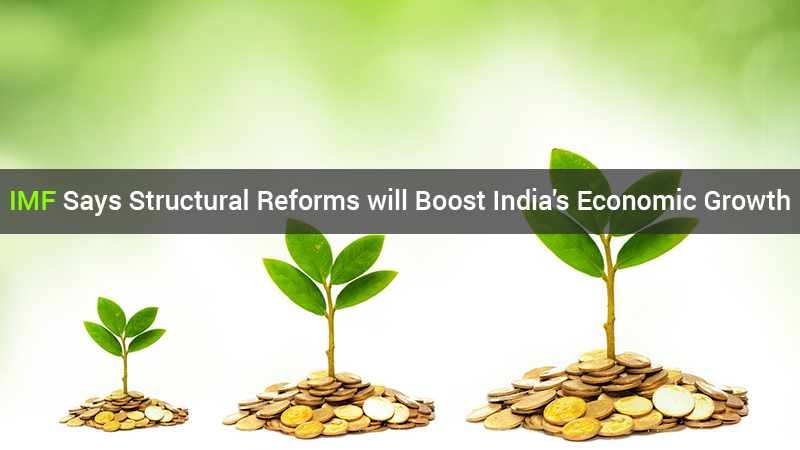
BEIJING: IMF yesterday, said structural betterments that include GST and the other land reform zones will be the prominent factors to amplify the economic potentials of India.
“India’s growth outlook is favorable, with GDP growth projected to strengthen to 7.5 per cent in the current fiscal year, even in the absence of major structural reforms,” said Ranil Manohara Salgado, Chief of Regional Studies Division, Asia and Pacific Department of IMF.
With the release of Regional Economic Outlook in Asia and Pacific in Hong Kong, IMF predicted that the financial yields of China and Japan were anticipated to decline further for beyond next two years, however, the Asian economies will continue to increase because of the domestic demand in spite of low international trade.
On replying to the mailed queries, Salgado told PTI that the growth panorama of the Indian economy looked favourable and via the implementation of these additional structural reforms like the GST, the country’s economy will certainly be enhanced up.
“Nonetheless, implementation of GST is a priority, as it would create a single national market, enhance the efficiency of intra-Indian movement of goods and services, and boost GDP growth further,” he said.
Besides Goods and Services Tax, there are various other major reforms incorporating the ones in the power areas, on land purchasing, in labour markets, and in many others that will be considered as a huge part to aid in India’s growth potential, he added.
On the point of Foreign Direct Investment (FDI), Salgado said because of the enormous steps were taken by the Indian government, the inflows of FDI to India are picking up.
“Several steps have been taken in recent years by the Government of India to liberalise and simplify the FDI regime, including raising the ceilings on FDI in many sectors of the Indian economy,” he said.
Indeed, partly as a result of these and other reforms, total FDI inflows to India increased to USD 44 billion in 2015, or 2.1 per cent of GDP, up from USD 34 billion in 2014, or 1.7 per cent of GDP, which is an encouraging sign, he said.
“Nonetheless, a more conducive business environment is necessary to attract greater FDI into the manufacturing sector and help the success of Make in India initiative,” he said.
Commenting on the slowdown of China’s economy, Salgado said that it was declined to 6.9 percent in the previous year and will continue to lessen down approx six percent in the coming three years.
According to the predictions of IMF, anticipations were there that Chinese economy would rise up at 6.5 percent in the current year.
The GDP target this year by the Chinese government is fixed to 6.5 to 7 percent.
“We project growth to slow to around 6 percent in the next three years. Such a slowdown in our view is necessary to address the vulnerabilities in the economy, such as debt overhang, excess housing inventory, and overcapacity in heavy industries,” he said.
“For the medium-term, it is important that the government continues to progress on structural reforms and boost productivity growth.
This will help China maintain its high growth despite the ageing population and needed slowdown in investment, and ensure its continued convergence to high-income status,” he said.
When discussing about the economic slowdown of China’s job market, he said “the degree of job loss in the industrial sector depends on how forceful the authorities implement the supply-side reform, entailing the exit of non-viable firms in overcapacity sectors”.
Interesting One: Income Tax Department may call All Indians named in Panama Papers.